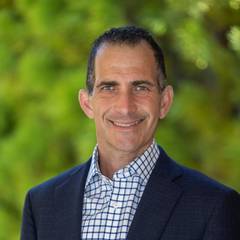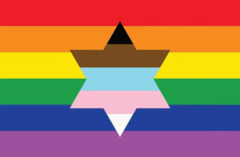Praying Is Like Jazz Playing
02/01/2024 09:00:28 AM

"Praying is like playing jazz. You can play alone, but exciting things happen in sessions with other musicians, especially if you’ve played with them before… Sometimes we all pray in harmony, other times we pray at our own rhythm, at our own volume. Jewish tradition explores the inner Jewish meaning of the words through interpretation, and ancient sacred texts stay alive when each generation re-interprets them.” —Rabbi Levi Weiman-Kelman
When we pray in temple, we typically use the fixed words from our liturgy, and those words are a lot like musical notes on a page in a piece of music. But sometimes our hearts and minds stray from what is in the prayer book, and we create our own personal prayers. We improvise a prayer on the spot, reflecting what we feel inside. Similarly, a jazz musician begins a piece of music with the notes written on the page, but then she can take off on a musical journey, expressing a personal connection to the music by asking, “How can I make this music relevant to me?” Exploring the ins-and-outs of the melody, harmony and rhythm, the musician eventually finds a way back to the printed music. Just like we, eventually, return to the words of prayer.
The French sociologist and anthropologist, Claude Levi Strauss wrote that music is the only language with “the contradictory attributes of being at once intelligible and untranslatable.”
When the musician and the praying person leave the printed text, they allow themselves to transform their art and soul to a higher, and potentially more meaningful level of expression and connection.
But it’s not just the art of improvisation that has the potential to open our hearts to a deeper prayer experience. Our musical memory also plays a large role in how we might interpret hearing a particular piece of music.
Think about a moment in your life when a piece of music really touched your soul — a concert, a recital, a prayer. Return to a time when you heard Hatikvah played or sung, or remember the melody by which you walked down the aisle. Try to recall a love song that reminds you of new love or love lost. Perhaps it was an experience at a classical music concert, or maybe it was at a Grateful Dead show. These melodies and musical experiences transcend words, taking us back in time and into the deep recesses of our memory and our souls. They can transport us to another time and palace and help us to access the emotion the music evoked when we originally heard it.
On Passover, we are challenged to use our collective memory as the haggadah asks us to imagine what it might have been like for the Israelites to cross the Sea of Reeds. As they approached the sea with the Egyptians gaining behind them, we can only imagine the many emotions they felt… especially… their fear. But then… the sea splits, and as they walk through to the Promised Land, what is the first thing they do…? They burst into song. They sing for their freedom, they sing praises to God, they sing at the wonder of the miracle before them. Every time we sing the Mi Chamocha in some way we recreate this moment.
Victor Hugo wrote, “Music expresses that which cannot be said, and on which it is impossible to be silent.” By way of music, our souls are capable of reaching beyond ourselves, and beyond the limitations of our words. Music makes it possible for us to reach back in time to an experience not our own, and yet make it our own. With music, we can harmonize with the past. With music, a room full of strangers can experience the beauty of community.
According to the great Chasidic Rabbi Nachman of Bratslov, “The most direct means of attaching ourselves to God from this material world is through making music and song.” So, while singing out loud together is a powerful community building practice, it’s deeper than that because each time we open our mouths and our hearts in song we potentially come even closer to the essence of the divine.






